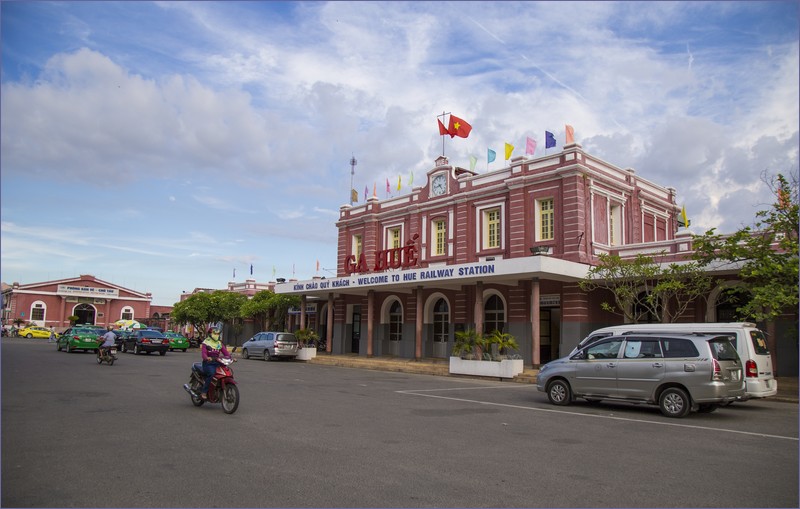Train travel in Vietnam is very popular among tourists. Almost all long-distance trains in Vietnam run on the route Hanoi – Ho Chi Minh. All trains between two largest cities in Vietnam are branded “Reunification Express”. The Hanoi – Ho Chi Minh route is the main railway in the country. It is 1,727 km long and has some short branches. Vietnam has international railway connection with China (as far as I know the train was not resumed after pandemic). There are plans to build new railway lines connecting the country with adjacent countries in the nearest future for both – freight and passenger traffic.
The Vietnamese government invests in railway and a railway network is improving.
Last updated: 31.05.2025
Train travel in Vietnam – useful websites
Almost all passenger trains in Vietnam are operated by state-owned Vietnamese Railways Company.
Vietnamese Railways – official website, online shop (English version available)
Vietnamese Railways – website with online shop
Travelguide.com – information about Nanning – Hanoi train
There are many travel agencies which offer train tickets in Vietnam and provide up-to-date timetables.
25 May 2025 the train from Nanning to Hanoi was resumed.
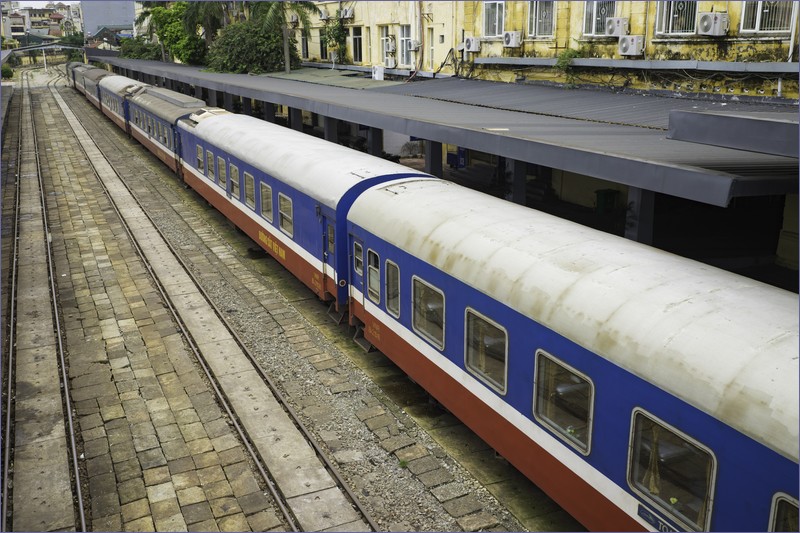
Train travel in Vietnam – basic information
Vietnamese trains are a popular mode of transportation among tourists. There shouldn’t be a problem with buying a ticket, but due to high demand, it’s recommended to purchase tickets well in advance. Vietnamese ticket counters are computerized, but the language barrier might be a challenge when communicating at the counter. Additionally, ticket agents are usually accustomed to foreigners traveling in the most expensive carriages, which could complicate your journey if you prefer to travel in one of the lower classes. If your train travel in Vietnam is a once-in-a-lifetime trip, it’s worth spending a bit more but sometimes even in expensive classes you may find old carriages, but generally rolling stock quality is decent. In the most expensive class, you can get a good night’s sleep and rest well, thereby saving on hotel accommodations.
Usually there are two toilets in Vietnamese trains at the both ends of the each carriages. Trains in Vietnam have both toilets – squat toilets (a hole in the floor) or Western-style toilets.
There are four classes in Vietnamese trains:
Soft sleeper – the most expensive and comfortable class. There are four beds in a compartment, with bedding and a soft mattress provided. All soft sleeper cabins are locable. There are no ladders in cabins.
Hard sleeper – similar to a couchette. There are six bunks in a compartment three on each side on top of each other, with a hard mattress and bedding. Some are lockable, some not.
Soft seater – an open-plan carriage with comfortable seats and air conditioning. Most expensive seating carriages. Seats are arranged 2+2.
Hard seater – an open-plan carriage with wooden benches, which may or may not have air conditioning. In not air-conditioned trains fans are installed. Very cheap tickets but it is suitable only for short distances.
On local lines, you’ll also find carriages with wooden benches without air conditioning. In a television program, I saw two types of “soft seater” carriages—one with comfortable seats and another with seats that were much less comfortable. Both carriages had air conditioning.
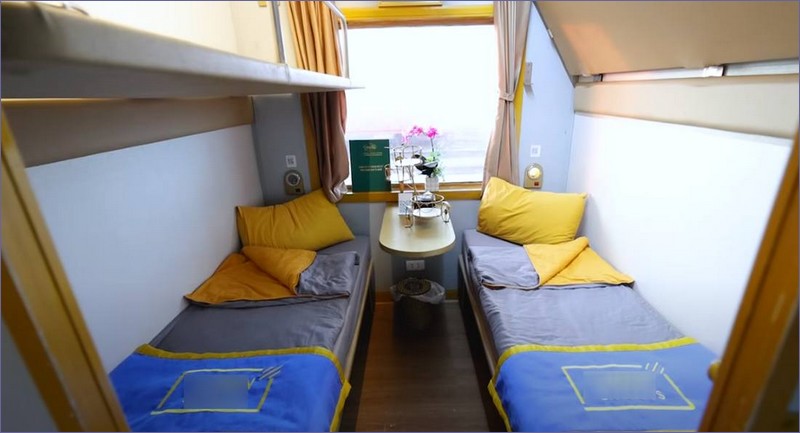
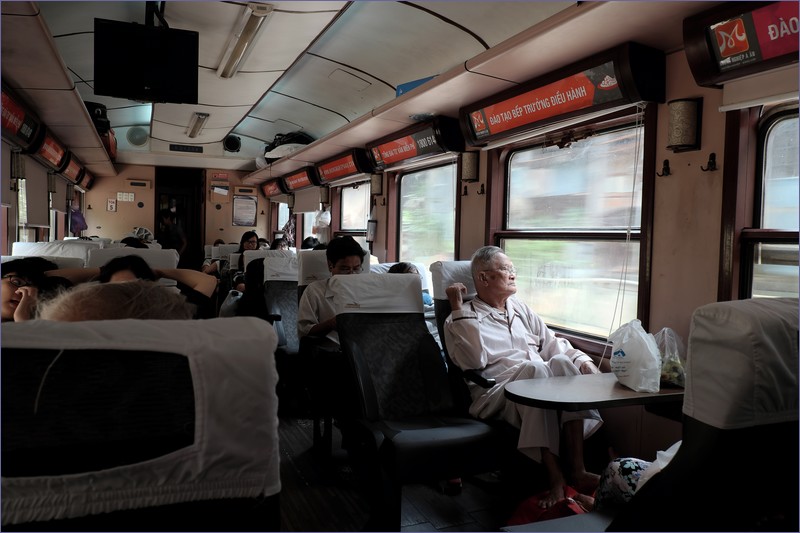
Trains in Vietnam – Reunification Express
The most popular railway connection in Vietnam runs from south to north, linking Ho Chi Minh City (formerly Saigon) to Hanoi. Every day, five trains head north and five go south. The route covers about 1,727 kilometers, and the journey takes 30-34 hours. There are other trains which run on short distances.
The construction of the railway began during the French colonial period, but it was a strategic target during all the wars. Nowadays, there are no issues with train operations, and the line is worth traveling, making short stops in the cities along the way.
The most interesting part of the train route is the Hai Van Pass. The journey through this section offers beautiful views, tunnels, and bridges over rushing mountain streams. At the entrance to each tunnel, a guard signals with a flag whether the train is not running from the other side of the tunnel. The Hai Van Pass serves as a natural border between the northern and southern climates of Vietnam.
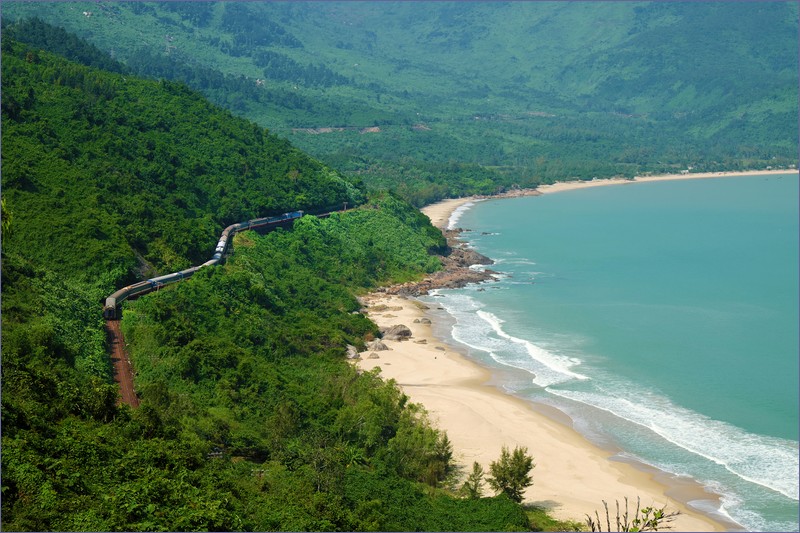
Special Express SE21/22 Saigon – Da Nang
In April 2024 Vietnam Railway Corporation inaugurated high-quality passenger service Saigon – Da Nang. Train is comprised of refurbished air-conditioned carriages with 4-bed sleeping compartments and seating carriages. There is also a carriage with 3 VIP compartments with 2-bed compartments. Each bed in the sleeper cars has reading light, charging port, new mattresses, blankets, sheets, pillows, and curtains. Seating carriages have seats that can rotate 180 degrees. The interiors of the carriages have been redesigned to be more spacious than traditional trains.
The dining car is centrally located.
The pair of trains SE21/SE22 will run daily on the Saigon – Da Nang route and vice versa. Train SE22 departs at Saigon station at 11am and arrives at Da Nang station at 6:55am the next day; while train SE21 departs from Da Nang station at 8:15 a.m. and arrives at Saigon station at 4:15 a.m. the next day.
Passengers who travel by SE21/SE22 train can use separate waiting rooms at Saigon and Da Nang stations.
Each train can carry over 400 passengers.
Train Street in Hanoi
In the center of Hanoi, there is a narrow street where daily life goes on as usual. It’s a typical street, with houses on both sides and people going about their activities. What sets it apart is that instead of a road, there are tracks running down the middle of the street, where a train passes several times a day. This street has been the subject of many articles and TV programs. I recommend clicking on the photos to see what the street looks like in reality.
Currently, the street is overrun with tourists wanting to take pictures for social media.
A similar street can be found in Nha Trang, right next to the railway station.
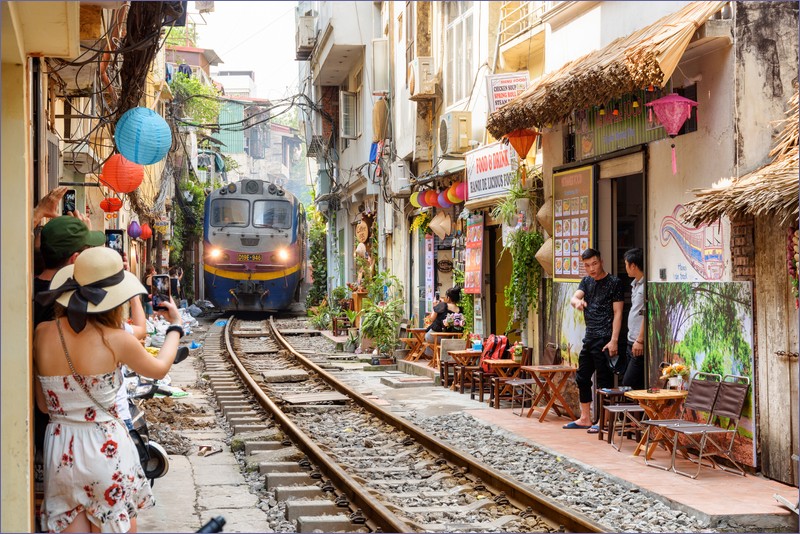
Trains in Vietnam Da Lat – Thap Cham Cog Railway
One of Vietnam’s railway attractions is the cog railway from Da Lat to Thap Cham. This is a remnant of a much longer cog railway route that operated along an 84 km stretch until the Vietnam War.
The origins of the Da Lat – Thap Cham cog railway date back to the 1890s when the French established the Da Lat resort. Access to the resort was difficult due to the terrain, so it was decided to build a cog railway.
Construction of the 40 km Tourcham – Krong Pha section began in 1903, but work was frequently halted due to technical issues. The first section, Thap Cham – Song Pha (41 km), was completed in 1919, and the second section, Song Pha – Da Lat, opened in 1932. The cog system was used on three sections of the line between Song Pha and Da Lat.
For decades, the railway played a significant role in the economy of Indochina, transporting not only tourists but also vegetables, fruits, and other goods.
During the First Indochina War in 1945-1946, large parts of the railway line were destroyed, including four steam locomotives. The infrastructure was rebuilt, and by 1947, trains were back on the tracks. In the 1960s, there were plans to electrify the line, but these plans were never realized due to financial constraints.
The railway operated until 1969, after which services were suspended due to safety concerns and significant losses. The Vietnam War had already been ongoing for seven years.
After the war, the line was dismantled, and the tracks were repurposed for rebuilding the main railway line. In 1992, the Da Lat station was renovated, and tourist trains have been running on a seven-kilometer section ever since. There were plans to rebuild the entire line, but the lack of funds were abandoned.
Several steam locomotives that once served the cog railway returned to Switzerland and are still in operation on the Furka steam railway.
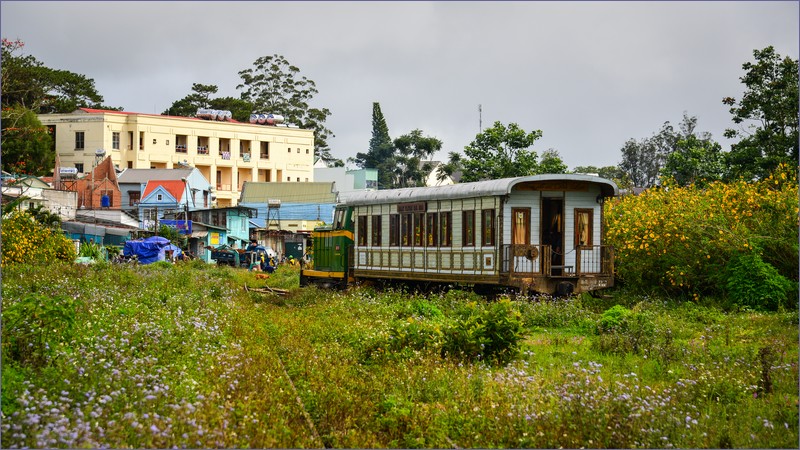
Ba Na Funicular Railway (funicular)
A very popular is a funicular railway that transports tourists to the top of Ba Na Mountain (different sources report different heights), located 45 kilometers west of Da Nang. It was a first funicular in Vietnam
The railway was opened in the second half of April 2014. The route is about 400 meters long, with a travel speed of 5 meters per second. The funicular can transport 1,489 passengers per hour.
The funicular’s rolling stock consists of two cars—one red and one yellow. The designers of the railway were inspired by the Polybahn funicular in central Zurich.
In 1919, the French built a resort on Ba Na Mountain for dignitaries and officers. The resort was destroyed during the Vietnam War, and after 2000, it was decided to rebuild it.
You can also reach Ba Na Mountain via a cable car that spans over 5 kilometers.
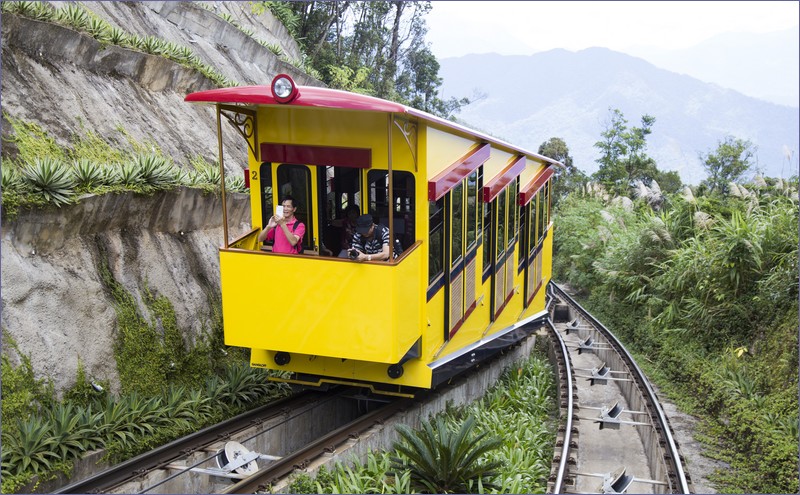
Sapa – Fansipan Funicular Railway
On March 31, 2018, the second funicular railway in Vietnam was opened. It connects the popular resort town of Sapa with the Fansipan ski resort.
The route is about 2 kilometers long. The modern funicular railway starts at the station near the MGallery Hotel in Sapa and ends at Fansipan Station. Along the way, it passes through two tunnels and crosses four viaducts. The maximum speed is 10 meters per second. The funicular can carry 2,000 passengers per hour.
The travel time is 6 minutes. The rolling stock consists of two cars made by the Swiss company Garaventa. The cars are designed in the style of the early 20th century and resemble similar cars that operated in Europe during that time.
Each car can hold 200 passengers. Both railway stations are modern and stylish. The official name of the funicular is Muong Hoa Funicular.
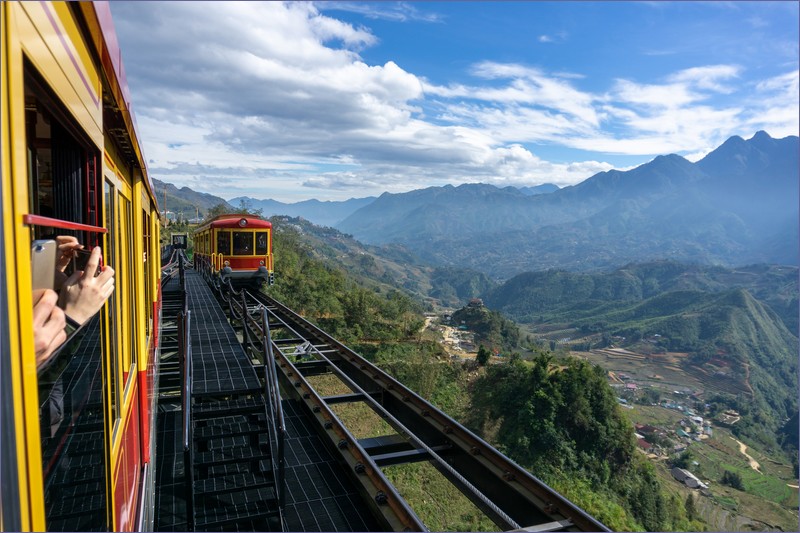
Vietnamese trains – Monorail in Da Nang
The first monorail in Vietnam was opened on 1 January 2016 in Asia Park in Da Nang. The 1,8 km long loop is served by eight Intamin P6/66 monorails. Each monorail has 11 cabins with panoramic glasses. There are three stations at the park. Every monorail is equipped with a modern audio system and was produced by Intamin Transportation Company from Switzerland. The park showcases replicas of famous architectural works from Asian countries and it is one of the most famous tourist attractions in region. The area includes a culture park, an amusement park and a multi-functional center.
Train travel in Vietnam – Hanoi Urban Railway
Noteworthy is a rapid transit system in Hanoi. The first line of metro railway was opened on 6 November 2021. The line 2A connects Cat Linh station (Dong Da) and Yen Nghia station (Ha Dong). Total length of the route is 13.05 km with 12 stations on the line. Trains cover the distance in more than 23 minutes. Each train is comprised of 4 carriages and can carry 960 passengers. Operating speed is 35 km/h, maximum speed 80 km/h. The frequency is every 10 minutes. All stations are elevated. The line is owned by Vietnam Railways and operated by Hanoi Metro Company (HMC).
Trains run from 05:30 to 22:00.
The system will eventually consist of 8 lines with a total length of 318 kilometres.
Tickets can be purchased at ticket counters or from ticket vending machines. There are many tickets available: one-ride tickets, day tickets, weekend tickets or monthly tickets.
Hanoi’s second metro line was expected to enter operation in July 2024 but it was postponed.
Hanoi Urban Railway – official website
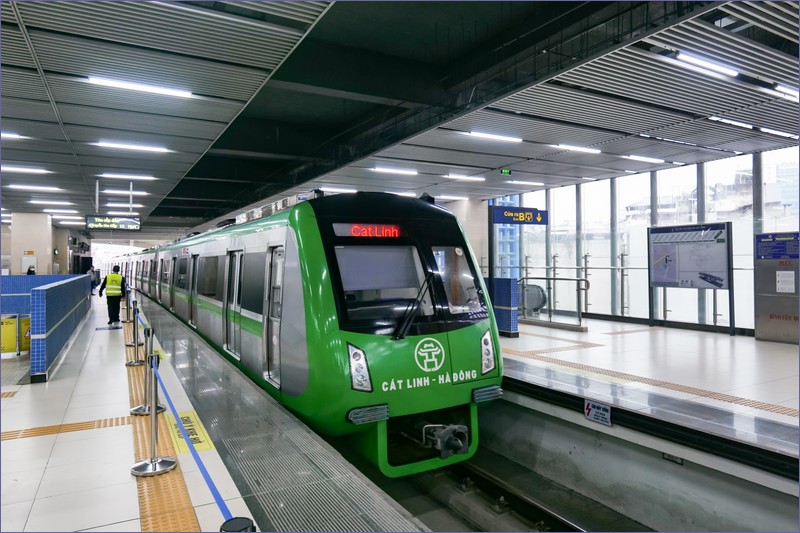
Trains in Vietnam – Ho Chi Minh City metro
Metro in Ho Chi Minh City is is due to open in July 2024. The first line from Ben Thanh to Suoi Tien is 19.7 km long and serves a total of 14 stations, three of which are underground. The rapid transit system is operated by Management Authority for Urban Railways (MAUR). All 17 trains of the Line 1 fleet were supplied by Hitachi. Each train consists three carriages and can accomodate up to 930 passengers (147 seated and 789 standing passengers). Trains are 61.5m long and have 147 seats. The trains will operate at up to 110km/h on elevated sections of Line 1 and up to 80km/h on the underground section.
The second line is under construction. The line will be 48 km long – construction is currently separated into 3 phases.
Tourist train Revolution Express
There are plans to launch a new tourist vintage train “Revolution Express” in late 2024 or 2025. The steam hauled trains will be comprised of two fully appointed retro-styled carriages that can seat up to 57 passengers each, as well as a custom-made kitchen carriage and a baggage carriage. The operator restored two original steam locomotives from the 1960s – both built locally in Vietnam, based on the French Mikado design.
The Revolution Express will make a return trip between Danang city and the former royal capital of Hue each day. Each journey will traverse the scenically remarkable Hai Van coastal mountain range and stop at Lang Co adjacent to beautiful lagoon and beach scenery.
The Revolution Express is the only private rail operator in Vietnam.
Related articles:
